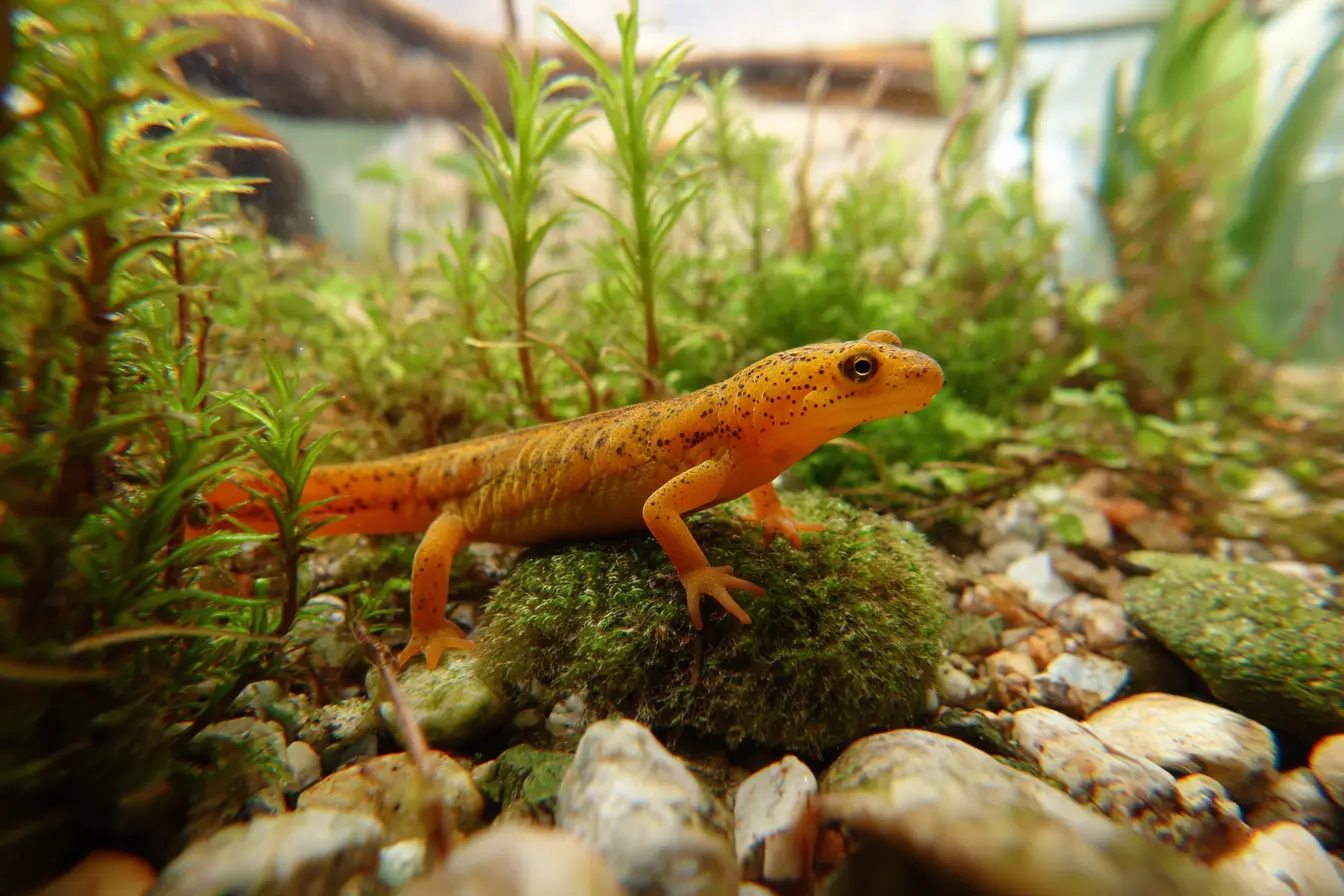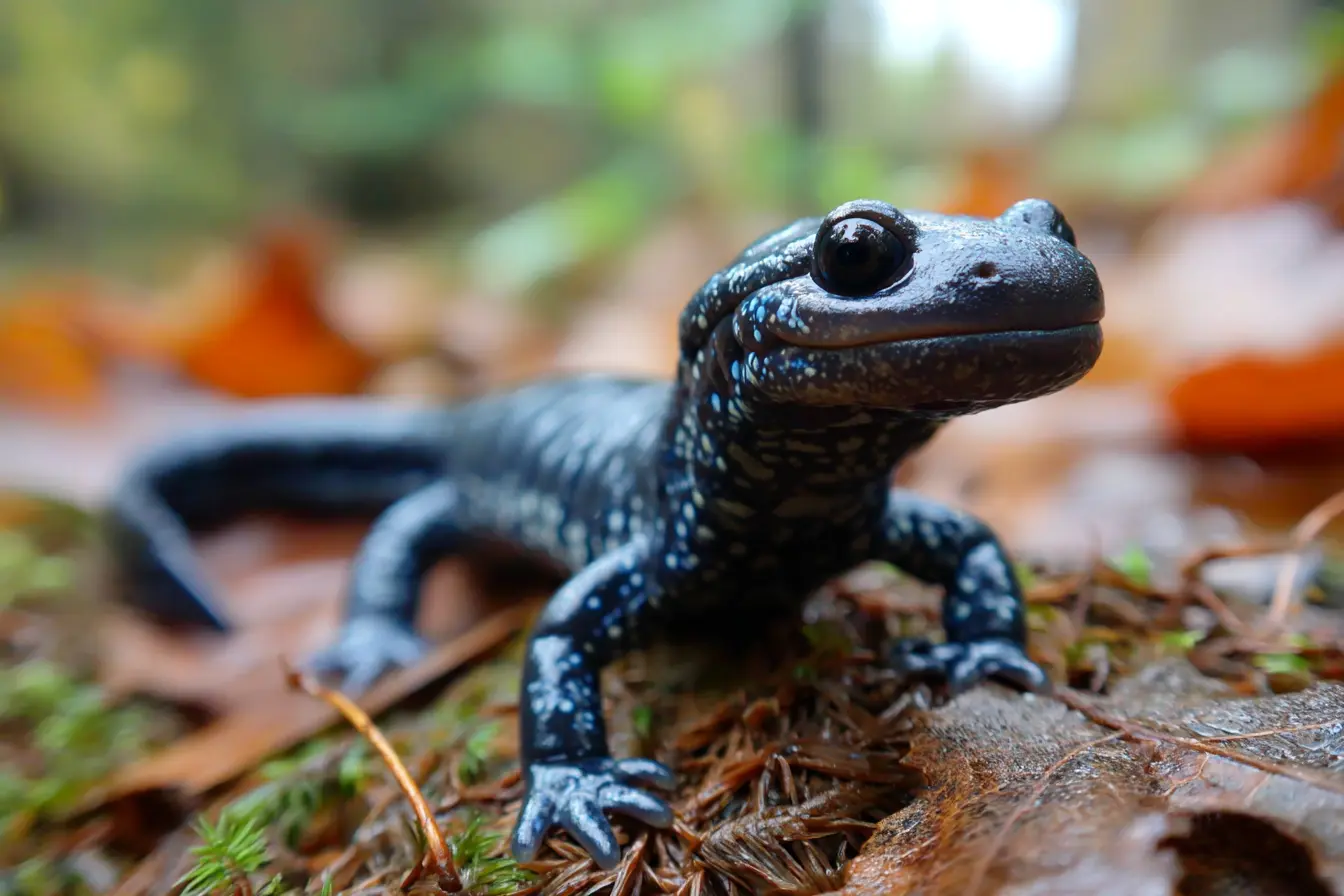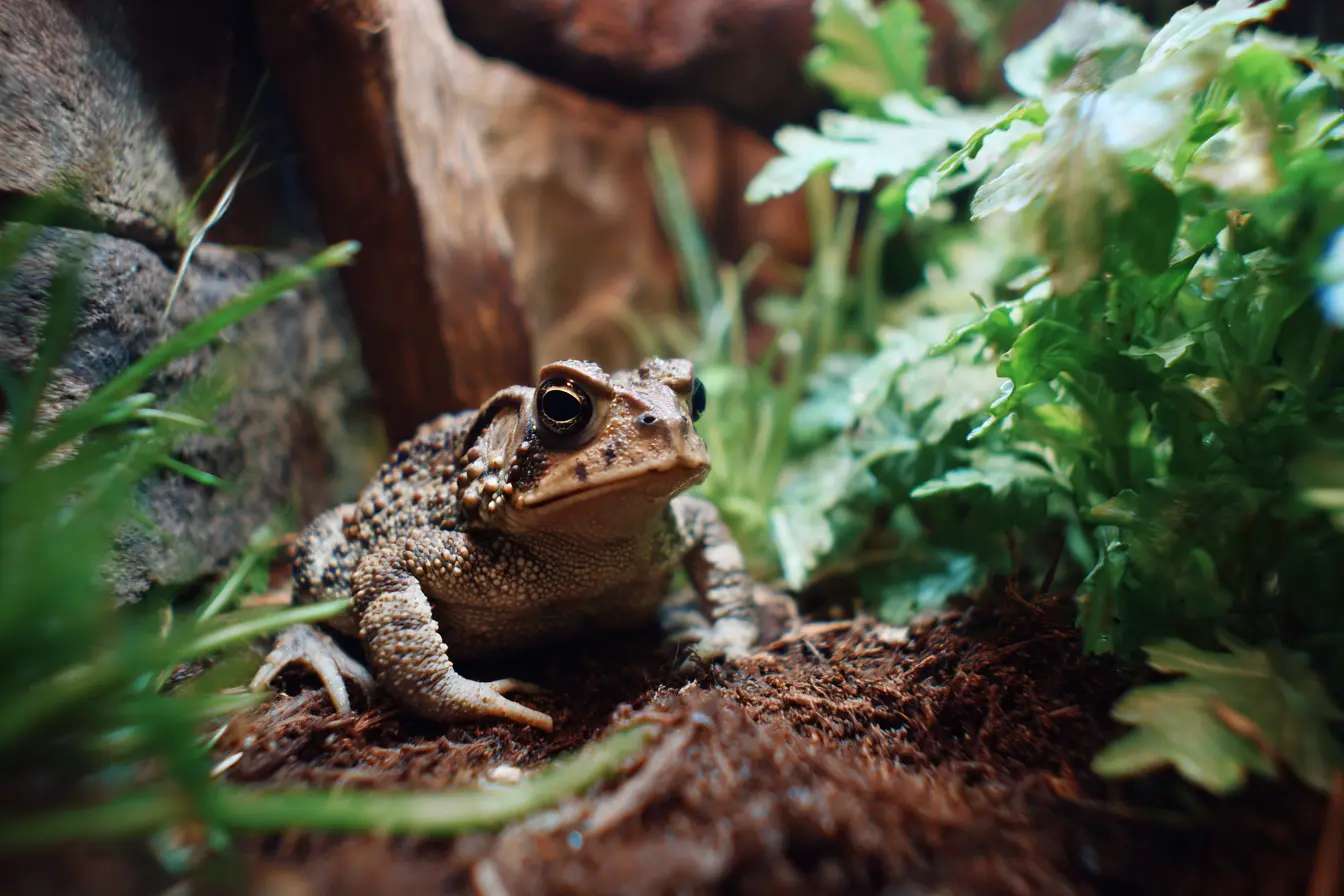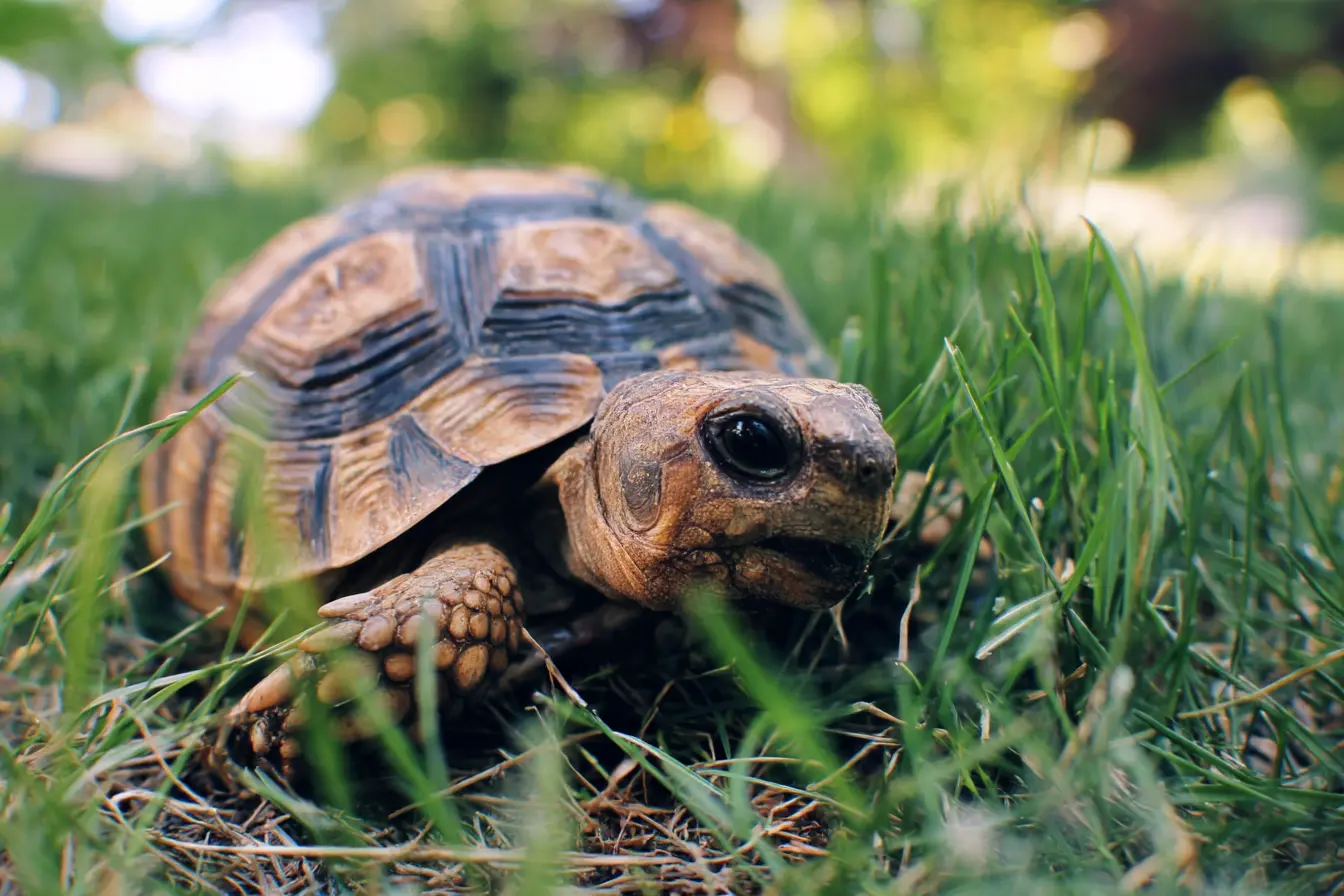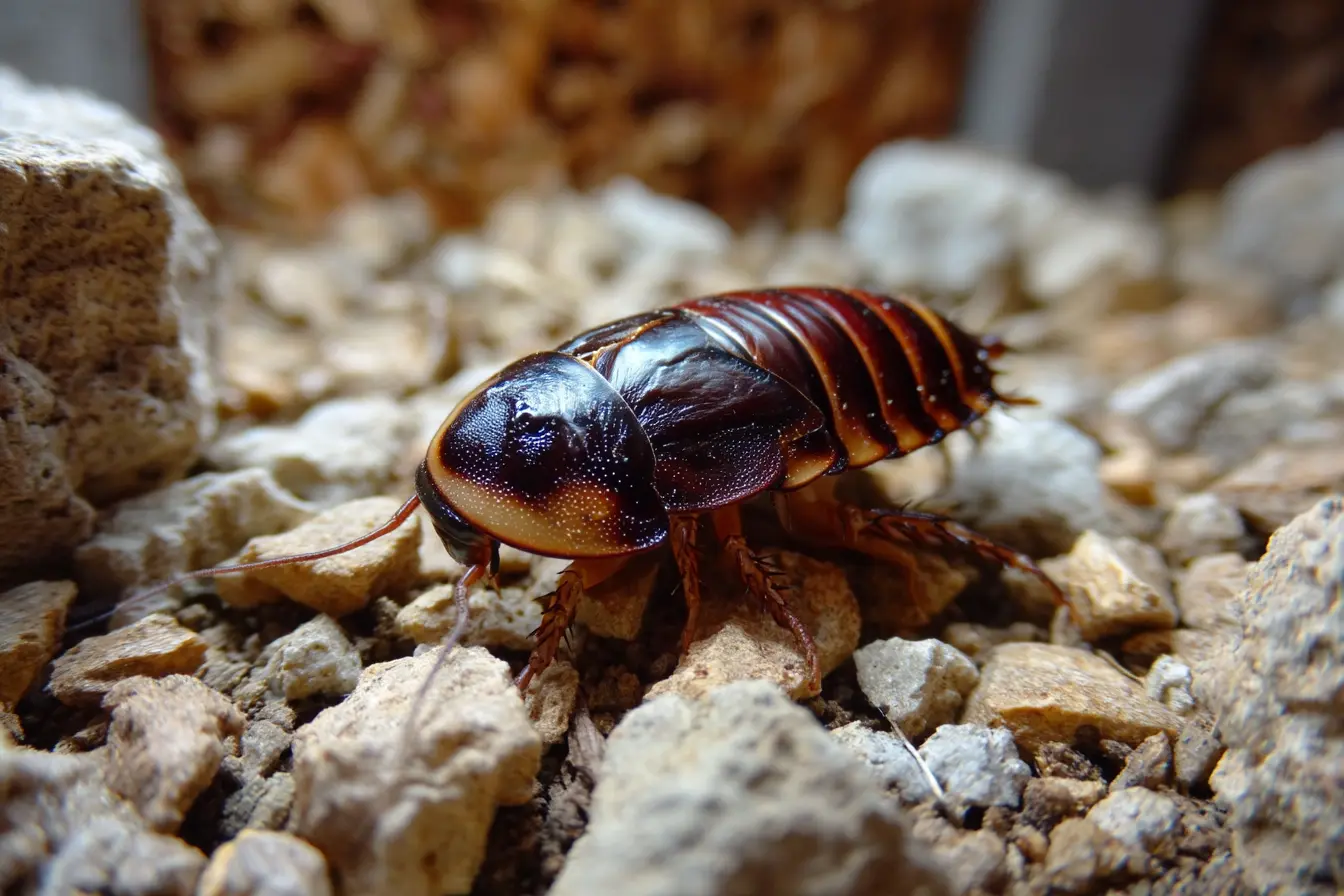
Keeping the Cuban Burrowing Cockroach
The Cuban burrowing cockroach (Byrsotria fumigata) is a large, fossorial invertebrate known for its robust body, burrowing nature, and ease of care. Also called the "giant cave cockroach", this species is native to Cuba and is increasingly popular among insect hobbyists due to its hardy nature and fascinating behaviour. In this guide, we'll walk through everything you need to know to keep Byrsotria fumigata successfully in captivity.
What is a Cuban Burrowing Cockroach?
The Cuban burrowing cockroach is a flightless, tropical insect adapted for life underground. It belongs to the Blaberidae family, known for large, often wingless roaches that thrive in humid environments.
Key Characteristics:
- Scientific name: Byrsotria fumigata
- Size: Up to 5–6 cm (2–2.5 inches)
- Lifespan: 1.5 to 2 years
- Appearance: Stout, dark brown body; wingless in females and reduced wings in males
- Wings: Males have small, non-functional wings; females are completely wingless
- Temperament: Shy, burrowing, and non-aggressive
These cockroaches are odourless, quiet, and non-invasive — ideal for both novice and experienced invertebrate keepers.
Enclosure Setup
Tank Size
A 20–30 litre plastic or glass container is suitable for a small group. Ensure it has a secure lid with ventilation, especially since they are excellent diggers and may test the boundaries.
Ventilation
While high humidity is important, air circulation prevents mould. Use mesh-covered holes or a ventilated lid to allow fresh air exchange without letting the humidity drop too much.
Substrate
As burrowers, substrate depth is critical. Provide at least 10 cm of loose, moist material to support digging and breeding:
- Coconut coir (preferred)
- Organic topsoil (chemical-free)
- Sphagnum moss mixed in for moisture retention
- Leaf litter or bark mulch on top for enrichment
Keep the substrate slightly damp but never wet. Spot-clean regularly and replace fully every couple of months.
Hides and Structure
Although they spend most of their time underground, surface hides add security and reduce stress:
- Cork bark slabs
- Bark tubes or small caves
- Stacked egg cartons
Provide dark, snug areas that simulate natural crevices.
Temperature and Humidity
Mimic their tropical Cuban environment to keep them healthy and active.
- Temperature: 24–28°C (75–82°F)
- Humidity: 70–80%
Use a heat mat on one side of the enclosure to provide a thermal gradient. Mist occasionally, especially during warm weather or when the room is dry.
Diet and Feeding
Cuban burrowing cockroaches are omnivorous scavengers and not picky eaters. Feed a balanced mix of plant matter and protein.
Vegetables:
- Carrot
- Sweetcorn
- Courgette
- Cucumber
Fruits:
- Apple
- Banana (in small amounts)
- Mango
- Melon
Protein:
- Fish flakes
- Dog kibble (high-quality)
- Cooked chicken or egg (occasional)
- Roach jelly or commercial insect food
Feed 2–3 times a week in small portions. Remove uneaten food within 24–36 hours to avoid mould.
Water
Hydration is essential, especially in higher temperatures.
- Use water gel crystals for safety
- Provide moist fruits/veg to help meet hydration needs
- Avoid open water bowls (drowning risk for nymphs)
Mist lightly to raise humidity and hydrate the substrate.
Handling and Behaviour
These cockroaches are shy and spend most of their time underground. They are not aggressive and rarely bite.
Tips for Handling:
- Scoop gently from underneath
- Avoid disturbing them frequently — they may play dead
- Do not handle freshly moulted individuals
Nocturnal by nature, they are most active during the night but may surface briefly during quiet daylight hours.
Breeding and Colony Management
Breeding is straightforward with stable conditions and enough substrate.
Reproduction Facts:
- Ovoviviparous: Females retain the ootheca internally
- Gestation: 6–8 weeks
- Live-born nymphs: Pale at birth, darkening with age
- Maturity: 4–6 months depending on temperature and diet
Colony Tips:
- Keep a group of at least 6–10 for breeding success
- Provide ample burrowing space for gravid females
- Minimise disruption to avoid stress-related breeding issues
Multiple generations can be kept together safely.
Cleaning and Maintenance
These cockroaches are low maintenance if housed properly.
Cleaning Routine:
- Daily: Check temperature, humidity, and food
- Weekly: Remove old food, spot-clean substrate
- Monthly: Replace part or all of the substrate if soiled
Use hot water or vinegar for cleaning surfaces — avoid strong chemicals.
Health and Common Issues
Byrsotria fumigata is hardy, but some issues can arise with poor care.
- Dryness: Causes failed moults or lethargy
- Mould: Over-misting or rotten food encourages fungal growth
- Mites: Attracted by unclean conditions or overfeeding
- Escape attempts: Rare, but a loose lid may lead to adventure-seekers
Maintain a clean, stable environment and issues are rare.
Pros and Cons
Pros:
- Easy to care for and breed
- No smell or noise
- Fascinating burrowing behaviour
- Hardy and forgiving of minor mistakes
- Safe for children and educational settings
Cons:
- Largely hidden from view
- Not ideal for regular handling
- Require warm, humid conditions
- May be perceived as “boring” by those seeking more active insects
Final Thoughts
The Cuban burrowing cockroach is an excellent choice for those interested in naturalistic invertebrate setups or bioactive terrariums. Their peaceful nature, unique lifestyle, and simple care requirements make them a rewarding species to keep.
Although they spend much of their lives beneath the surface, knowing they are thriving in a well-crafted environment is satisfying in its own right. For a pet that’s quiet, clean, and marvelously misunderstood, Byrsotria fumigata fits the bill perfectly.
Vets near you
Speciality vets
- Aquatics vet specialists
- Birds vet specialists
- Camelids vet specialists
- Cats vet specialists
- Cattle vet specialists
- Deer vet specialists
- Dogs vet specialists
- Equines vet specialists
- Exotic vet specialists
- Goats vet specialists
- Pigs vet specialists
- Poultry vet specialists
- Sheep vet specialists
- Small Mammals vet specialists
- Wild vet specialists
